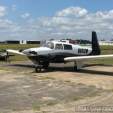How High Without Oxygen?
-
Members Online
- Marc_B
- CCAS
- MDMooney
- Dwb62
- exM20K
- PprophetBirdman
- 201er
- Teddyhherrera
- TaildraggerPilot
- Thedude
- alexz
- TCC
- Raistlin
- EricJ
- 7.Mooney.Driver.0
- Hank
- Rmnpilot
- Vance Harral
- spistora
- ElkoRandy20J
- Jarerh
- Bike_rider
- Lumberg
- Sabremech
- Utah20Gflyer
- Justin Schmidt
- Jeff Dennerline
- NickG
- Fly Boomer
- joepilot
- BillyT0020
- RescueMunchkin
- Lincoln
- AspiringOwner
- redbaron1982
- bixmooney


Recommended Posts
Join the conversation
You can post now and register later. If you have an account, sign in now to post with your account.